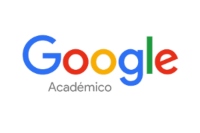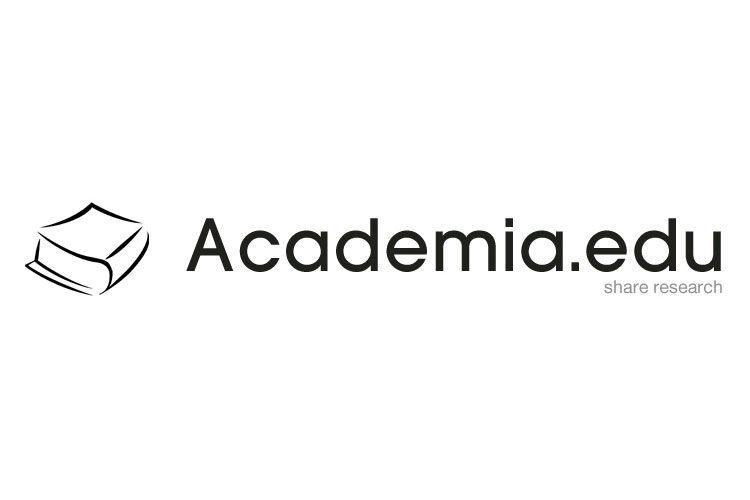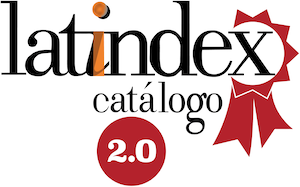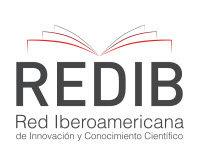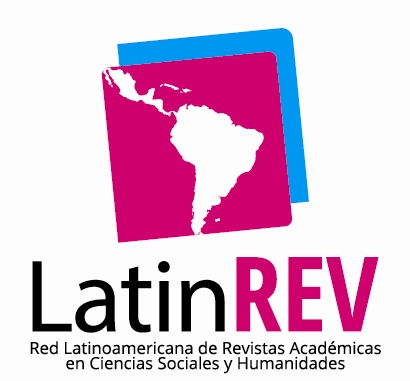Children's literature and its essential link to reading and writing
DOI:
https://doi.org/10.32645/26028131.1244Keywords:
children's literature, digital gamification, systematic review, reading and writingAbstract
Given the relevance of children's literature, largely underestimated, the aim of this article is to analyze children's literature and its essential link with literacy in children aged 3 to 8 years. A qualitative systematic review of observational studies was carried out in the Web of Science and Scopus databases considered reliable in the field of scientific research, a total of 625 articles were identified, from which 37 articles were selected and analyzed based on the inclusion criteria. The results highlight the relevance of children's literature in reading and writing due to its potential to captivate children's imagination and interest, laying the foundations for a lasting engagement with written language. The findings reveal that the integration of varied literary genres and innovative approaches, such as digital storytelling, enriches children's experience, adapting it to a constantly evolving technological world.
References
Allee-Herndon, K. A., Roberts, S. K., Hu, B., Clark, M. H., & Stewart, M. L. (2022). Let’s talk play! Exploring the possible benefits of play-based pedagogy on language and literacy learning in two Title I kindergarten classrooms. Early Childhood Education Journal, 50(1), 119–132. https://doi.org/10.1007/s10643-020-01141-6
Altun, D. (2019). Preschoolers’ Emergent Motivations to Learn Reading: A Grounded Theory study. Early Childhood Education Journal, 47(4), 427-443. https://doi.org/10.1007/s10643-019-00939-3
Angulo Montoya, J. & Vivas García, A. M. (2014). Un abanico de estrategias didácticas para promocionar la lectura con textos literarios. Legenda, 18(18), 169-191.
Aydın, E., Ilgaz, H., & Allen, J. W. (2021). Preschoolers’ learning of information from fantastical narrative versus expository books. Journal of Experimental Child Psychology, 209, 105170. https://doi.org/10.1016/j.jecp.2021.105170
Barros, M. S. F., Paschoal, J. D., Ferreira, A. L. P., & Barros, P. C. S. (2019). Arte e Educação: O teatro como recurso metodológico no trabalho pedagógico na alfabetização. Revista Ibero-Americana de Estudos em Educação. https://doi.org/10.21723/riaee.v14i3.12491
Bruner, J. S. (2009). Actual minds, possible worlds. Harvard university press.
Campbell, S. (2021). What’s happening to shared picture book reading in an era of phonics first? The Reading Teacher, 74(6), 757-767. https://doi.org/10.1002/trtr.2004
Cárdenas Páez, A. (2011). Piaget: lenguaje, conocimiento y educación. Revista colombiana de educación, (60), 71-91. http://www.scielo.org.co/scielo.php?pid=S0120-39162011000100005&script=sci_arttext
Cerrillo, P. C. (2016). La importancia de la literatura infantil y juvenil en la educación literaria. http://hdl.handle.net/10045/64749
Claxton, G., Costa, A., & Kallick, B. (2016). Hard thinking about soft skills. Educational leadership, 73(6). https://www.learningpersonalized.com/wp-content/uploads/2016/09/Hard-Thinking-about-Soft-Skills.pdf
Crescenzi-Lanna, L. (2020). Emotions, private speech, involvement and other aspects of young children's interactions with educational apps. Computers in Human Behavior, 111, 106430. https://doi.org/10.1016/j.chb.2020.106430
D’Silva, P. (2020). Literacy beyond mat-time: Bringing stories to life. He Kupu, 6(3). https://www.hekupu.ac.nz/article/literacy-beyond-mat-time-bringing-stories-life
De Rijke, V. (2021). Reading children’s literature. Education 3-13, 49(1), 63-78. DOI: 10.1080/03004279.2020.1824703
Deci, E. L., & Ryan, R. M. (2000). The “What” and “Why” of goal pursuits: human needs and the Self-Determination of behavior. Psychological Inquiry, 11(4), 227-268. https://doi.org/10.1207/s15327965pli1104_01
Delgado Marín, M. D., Méndez, I., & Ruiz Esteban, C. (2022). Comprensión y motivación lectora en Educación Infantil a través de la luz. Investigaciones Sobre Lectura, 2(17). https://doi.org/10.24310/isl.vi18.14399
Dickinson, D. K., & Neuman, S. B. (Eds.). (2007). Handbook of early literacy research (Vol. 2). Guilford Press.
Dore, R. A., Shirilla, M., Hopkins, E. J., Collins, M. F., Scott, M., Schatz, J., Lawson-Adams, J., Valladares, T. L., Foster, L., Puttre, H., Toub, T. S., Hadley, E. B., Golinkoff, R. M., Dickinson, D. K., & Hirsh‐Pasek, K. (2019). Education in the App Store: Using a mobile game to support U.S. preschoolers’ vocabulary learning. Journal of Children and Media, 13(4), 452-471. https://doi.org/10.1080/17482798.2019.1650788
Enverga, F. M. A., Del Rosario, K. K., Cruz, J. D., Gil, C., Legaspi, C. J., Navarro, R., Cajayon, S. B., Tabo-On, D. E., & Roque, M. D. (2020). Digital storytelling experiences among school-aged students captured through doodling activity. Enfermería Clínica, 30, 101-106. https://doi.org/10.1016/j.enfcli.2019.09.030
Ferrés, J. (2000). Educar en una cultura del espectáculo. Barcelona: Paidós
Flint, T. K. (2020). Responsive play: Creating transformative classroom spaces through play as a reader response. Journal of Early Childhood Literacy, 20(2), 385–410. https://doi.org/10.1177/1468798418763991 Gaitán Castro, A. L., y J.Mosquera Collazos. (2016). Estado de las investigaciones sobre la relación entre la literatura infantil y el proceso docente-educativo. Actualidades Pedagógicas, (67), 135-172. https://doi.org/10.19052/ap.3210
Griffith, S. F., Hagan, M. B., Heymann, P., Heflin, B. H., & Bagner, D. M. (2019). Apps as Learning Tools: A Systematic review. Pediatrics, 145(1), e20191579. https://doi.org/10.1542/peds.2019-1579
Hadley, E. B., & Dickinson, D. K. (2019). Cues for word-learning during shared book-reading and guided play in preschool. Journal of Child Language, 46(6), 1202-1227. https://doi.org/10.1017/s0305000919000552
Håland, A., Hoem, T. F., & McTigue, E. M. (2021). The quantity and quality of teachers’ self-perceptions of read-aloud practices in Norwegian first grade classrooms. Early Childhood Education Journal, 49, 1-14. https://doi.org/10.1007/s10643-020-01053-5
Heath, S. B. (1982). What no bedtime story means: narrative skills at home and school. Language in Society, 11(1), 49-76. https://doi.org/10.1017/s0047404500009039
Johnson, S. J., & Cochran, H. A. (2021). Collaborative research into the “hidden worlds” of children’s peer reading. Journal of Early Childhood Research, 19(3), 381-395. https://doi.org/10.1177/1476718x20983846 Korat, O., Tourgeman, M., & Segal-Drori, O. (2022). E-book reading in kindergarten and story comprehension support. Reading and Writing, 35(1), 155-175. https://doi.org/10.1007/s11145-021-10175-0
Kim, S. J., & Hachey, A. C. (2020). Engaging Preschoolers with Critical Literacy through Counter-Storytelling: A qualitative case study. Early Childhood Education Journal, 49(4), 633-646. https://doi.org/10.1007/s10643-020-01089-7
Kumpulainen, K., Byman, J., Renlund, J., & Wong, C. C. (2020). Children’s augmented storying in, with and for nature. Education Sciences, 10(6), 149. https://doi.org/10.3390/educsci10060149
Lenhart, J., Lenhard, W., Vaahtoranta, E., & Suggate, S. (2020). More than words: narrator engagement during storytelling increases children’s word learning, story comprehension, and on-task behavior. Early Childhood Research Quarterly, 51, 338-351. https://doi.org/10.1016/j.ecresq.2019.12.009
Martínez, M. D. D., & Meneses, R. V. (2020). La escritura de cuentos. Linhas críticas, 26, 1-15. https://doi.org/10.26512/lc.v26.2020.34605
Mayes, A. S., Coppola, E. C., & Fa, B. (2019). Using theatre to develop writing skills: The Story Pirates Idea Storm. The Reading Teacher. https://doi.org/10.1002/trtr.1855 Montalvo-Castro, J. A., y Martos-Castañeda, N. (2019). Diseño y evaluación de un nuevo formato digital de lectura de cuentos ilustrados: Correpalabras. Ocnos, 18 (3), 29-37. https://doi.org/10.18239/ocnos_2019.18.3.2008
Munita, F. (2018). “Para mí todos eran cuentos”: incidencia de la formación docente en las creencias y saberes sobre literatura infantil y juvenil. Catalejos. Revista sobre lectura, formación de lectores y literatura para niños, 3(6), 102-125. http://fh.mdp.edu.ar/revistas/index.php/catalejos/article/view/2507
Nicolopoulou, A., Ilgaz, H., Shiro, M., & Hsin, L. (2022). “And they had a big, big, very long fight:” The development of evaluative language in preschoolers' oral fictional stories told in a peer-group context. Journal of Child Language, 49(3), 522-551. https://doi.org/10.1017/s0305000921000209
Nodelman, P. (2008). The hidden adult: Defining children's literature. JHU Press.
Oakley, G., Pegrum, M., Kheang, T., & Seng, K. (2022). Mobile learning for early reading in Cambodia. Education and Information Technologies, 27(2), 1467-1487. https://doi.org/10.1007/s10639-021-10615-y
Oakley, G., Wildy, H., & Berman, Y. (2020). Multimodal digital text creation using tablets and open-ended creative apps to improve the literacy learning of children in early childhood classrooms. Journal of Early Childhood Literacy, 20(4), 655 679. https://doi.org/10.1177/1468798418779171
Pérez, A. (2006). “Por una educación lectora y escritora”. En Ortiz, M., Borjas, B. y Millán, Z. (2006). Propuesta didáctica para la enseñanza de la lectura y la escritora en la educación básica (pp.11-27). Caracas: Fe y Alegría.
Portilla, A., Almanza, V., Castillo, A., Restrepo, G. (2021). El desarrollo de las habilidades narrativas en niños: una revisión sistemática de la literatura. Revista de Investigación en Logopedia, 11(2), e67607. https://doi.org/10.5209/rlog.67607
Pulimeno, M., Piscitelli, P., & Colazzo, S. (2020). Children's literature to promote students' global development and wellbeing. Health promotion perspectives, 10(1), 13–23. https://doi.org/10.15171/hpp.2020.05
Rahiem, M. D. (2021). Storytelling in early childhood education: Time to go digital. International Journal of Child Care and Education Policy, 15(1), 1-20. https://doi.org/10.1186/s40723-021-00081-x
Ronimus, M., Eklund, K., Pesu, L., & Lyytinen, H. (2019). Supporting struggling readers with digital game-based learning. Educational Technology Research and Development, 67(3), 639-663. https://doi.org/10.1007/s11423-019-09658-3
Sánchez-Lara, R. A. (2022). Inclusión y justicia simbólica en experiencias lectoliterarias escolares. Magis: Revista Internacional de Investigación en Educación, 15, 1-20. https://doi.org/10.11144/javeriana.m15.ijse
Schaper, M. M., & Pares, N. (2021). Co-design Techniques for and with Children based on Physical Theatre Practice to promote Embodied Awareness. ACM Transactions on Computer-Human Interaction (TOCHI), 28(4), 1-42.
Sellan Naula, M. E. (2017). IMPORTANCIA DE LA MOTIVACIÓN EN EL APRENDIZAJE. Sinergias Educativas, 2(1), 13–19. https://sinergiaseducativas.mx/index.php/revista/article/view/20
Simpson, A., & Cremin, T. M. (2022). Responsible reading: Children’s literature and social justice. Education Sciences, 12(4), 264. https://doi.org/10.1145/3450446
Tabernero Sala, R. (2005). Nuevas y viejas formas de contar: el discurso narrativo infantil en los umbrales del siglo XXI (No. BOOK-2020-017). Prensas Universitarias de Zaragoza. https://puz.unizar.es/230-nuevas-y-viejas-formas-de-contar-el-discurso-narrativo-infantil-en-los-umbrales-del-siglo-xxi.html
Tamés, R. L. (1990). Introducción a la literatura infantil (No. 3). EDITUM.
Teichert, L., & Salman, M. (2023). Digital Technology in the Early Years: A reflection of the literature. McGill journal of education, 56(2-3), 292-313. https://doi.org/10.7202/1096456ar
Terán González, C. del C., de Vieras, E. P., & Peña Delgado, Y. J. (2017). Alternativas Didácticas de Lectura para el Fortalecimiento de la Calidad Educativa. Revista Scientific, 2(6), 29–51. https://doi.org/10.29394/scientific.issn.2542-2987.2017.2.6.2.29-51
Troncoso Araos, Ximena. (2016). Descubrir la Literatura Infantil. Atenea (Concepción), (514), 247-261. https://dx.doi.org/10.4067/S0718-04622016000200247
Vanbecelaere, S., Van Den Berghe, K., Cornillie, F., Sasanguie, D., Reynvoet, B., & Depaepe, F. (2019). The effectiveness of adaptive versus non‐adaptive learning with digital educational games. Journal of Computer Assisted Learning, 36(4), 502-513. https://doi.org/10.1111/jcal.12416
Vazeux, M., Doignon‐Camus, N., Bosse, M., Mahé, G., Guo, T., & Zagar, D. (2020). Syllable-first rather than letter-first to improve phonemic awareness. Scientific Reports, 10(1). https://doi.org/10.1038/s41598-020-79240-y
Vygotsky, L. S., & Cole, M. (1978). Mind in society: Development of higher psychological processes. Harvard university press.
Walan, S., & Enochsson, A. (2019). The potential of using a combination of storytelling and drama, when teaching young children science. European Early Childhood Education Research Journal, 27(6), 821-836. https://doi.org/10.1080/1350293x.2019.1678923
Whyte, M. (2019). Soft skills surfacing in collaborative reading practices at home and early childhood centre. Early Education, 65, 23-28.
Wright, C. Z., & Dunsmuir, S. (2019). The effect of storytelling at school on Children’s oral and written Language Abilities and Self-Perception. Reading & Writing Quarterly, 35(2), 137-153. https://doi.org/10.1080/10573569.2018.1521757
Zabala, L. T. y Gómez, K. J. (2018). La literatura infantil en el aprestamiento de la lectoescritura en niños del grado jardín. http://hdl.handle.net/20.500.12749/864
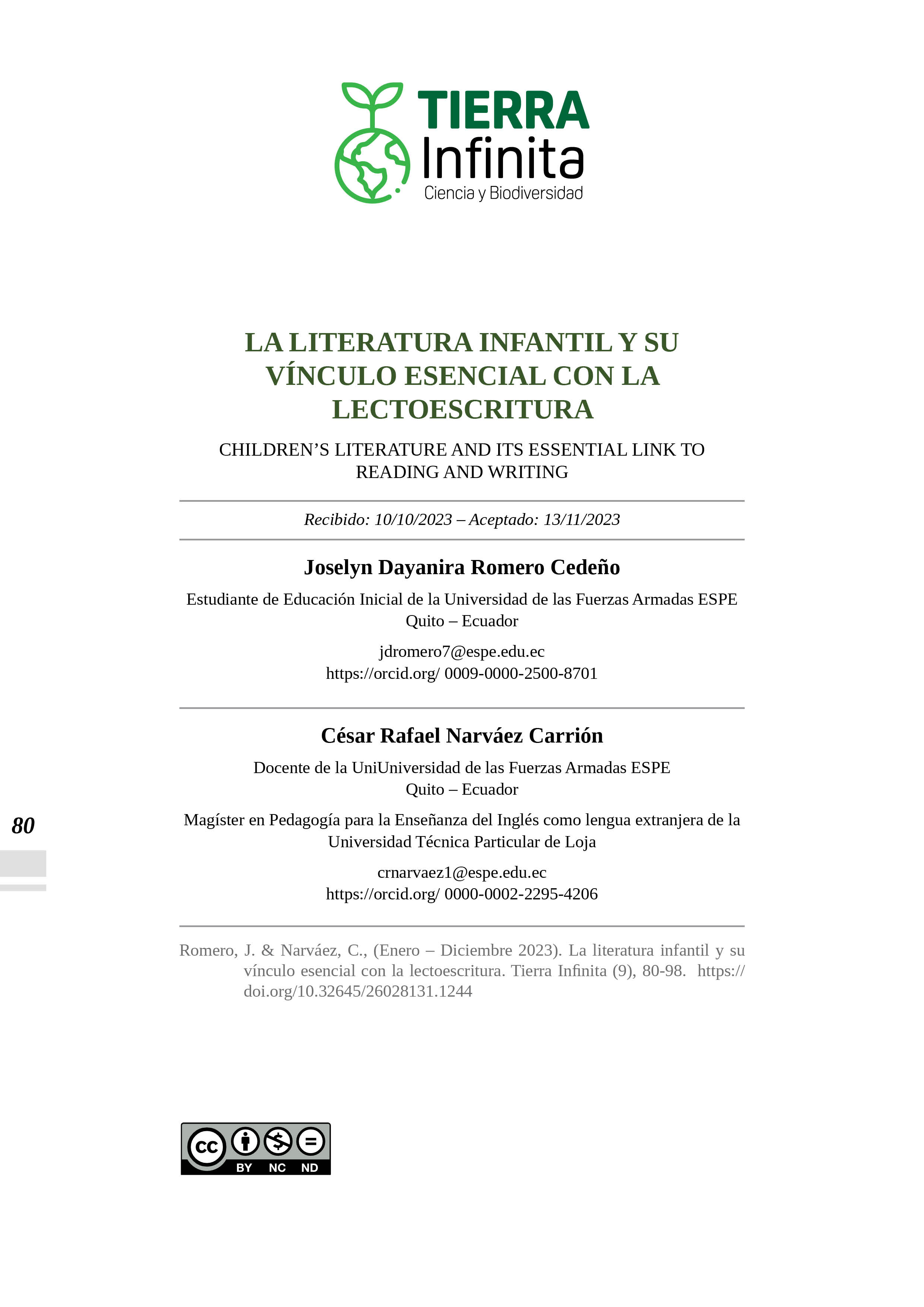
Downloads
Published
Issue
Section
License
Copyright (c) 2023 Joselyn Dayanira Romero Cedeño, MSc. César Rafael Narváez Carrión

This work is licensed under a Creative Commons Attribution-NonCommercial-NoDerivatives 4.0 International License.
El autor mantiene los derechos intelectuales y morales de su obra, autorizando a la editorial de la Revista Tierra Infinita la difusión y divulgación de su contenido con fines estrictamente académicos y de investigación, sin fines de lucro.




